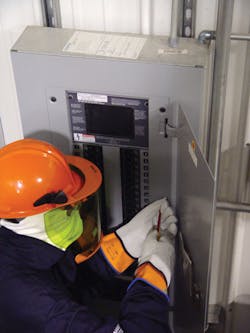If you’ve been using NFPA 70E for several years, great. But are you using the latest revision? The 2018 revision contains both minor and major changes, some of which were made after intense discussions among the members of the Technical Committee on Electrical Safety in the Workplace. New inputs from OSHA and other concerned parties also shaped the decisions that resulted in the current revision.
One of the primary goals was to make it simpler to use in the field. The information on PPE selection, for example, has changed with that goal in mind.
If you have an older revision, don’t simply toss it when you get the new revision. While the new revision has text shading to show what has changed since the previous revision, it doesn’t have the handwritten notes in the margins that your previous version probably has. It doesn’t have a way of reaching out into your procedures and training materials to highlight what should change there, either.
It’s helpful to use your older revision as a guide to understanding the “why” of how things are currently done. You can answer the question, “Why are we doing it this way, when the new revision shows to do it that way?” The answer can help you transition more smoothly to conforming with the new revision, especially if you also think about why the new revision would have the new rule (change) that you’re looking at instead of the old rule you were following.
About the Author

Mark Lamendola
Mark is an expert in maintenance management, having racked up an impressive track record during his time working in the field. He also has extensive knowledge of, and practical expertise with, the National Electrical Code (NEC). Through his consulting business, he provides articles and training materials on electrical topics, specializing in making difficult subjects easy to understand and focusing on the practical aspects of electrical work.
Prior to starting his own business, Mark served as the Technical Editor on EC&M for six years, worked three years in nuclear maintenance, six years as a contract project engineer/project manager, three years as a systems engineer, and three years in plant maintenance management.
Mark earned an AAS degree from Rock Valley College, a BSEET from Columbia Pacific University, and an MBA from Lake Erie College. He’s also completed several related certifications over the years and even was formerly licensed as a Master Electrician. He is a Senior Member of the IEEE and past Chairman of the Kansas City Chapters of both the IEEE and the IEEE Computer Society. Mark also served as the program director for, a board member of, and webmaster of, the Midwest Chapter of the 7x24 Exchange. He has also held memberships with the following organizations: NETA, NFPA, International Association of Webmasters, and Institute of Certified Professional Managers.
